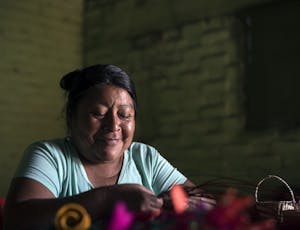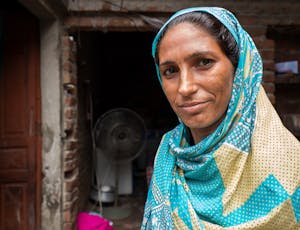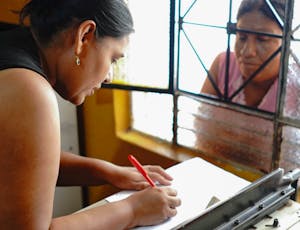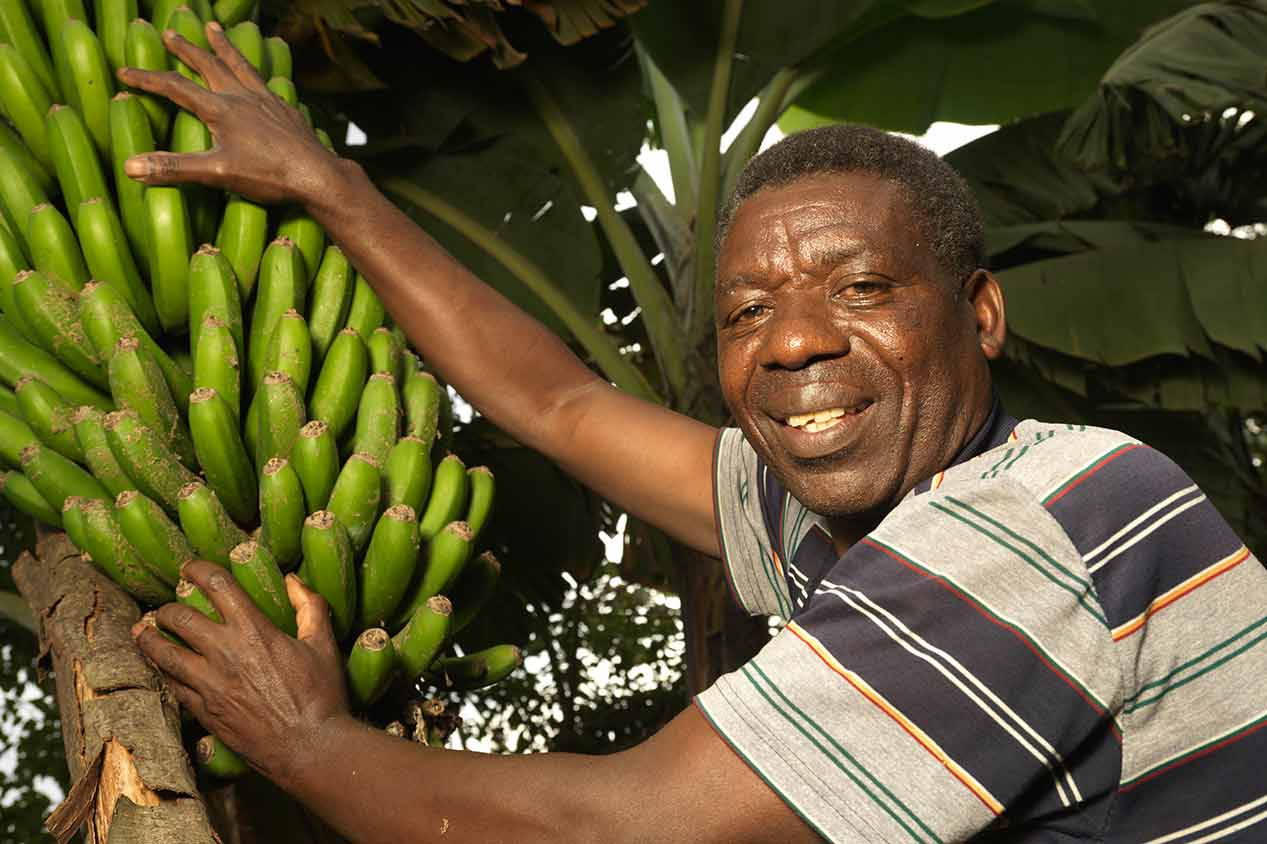
Access to a range of affordable and appropriate financial services is important for low-income people for a number of reasons.
Firstly, it can provide low-income entrepreneurs with the capital needed to operate and expand their businesses.
Having a reliable source of credit allows small business owners to better plan their business activities and manage their cash flow. Although the size of the loans may seem small, sometimes as low as $100, we should remember that for a quarter of the world’s population who survive on less than $4 a day, this is still a significant sum.
Secondly, through the increased income generated by their businesses as well as the ability to save, microfinance allows low-income households to build their assets. This could include acquiring land, constructing or improving their homes and purchasing livestock and poultry.
Thirdly, it can reduce the vulnerability of low-income households and build resilience. Access to credit, savings and insurance can help smooth cash flows and avoid periods when access to food, clothing, shelter, or education is lost. Microfinance can make it easier to manage times of difficulty such as the main earner in the household falling ill and being unable to work.
How can we lend to low-income people who offer little or no collateral?

Low-income people tend to lack traditional collateral, such as property or land deeds. To overcome this, organisations offering microfinance services to low-income communities use a number of methods to ensure repayment.
These include the use of personal guarantors (often respected local community leaders), thorough affordability and business assessments, and the use of solidarity groups in which groups of people (usually 4-5) approach the organisation collectively for a loan and are responsible as a group for repayment.
Group members are usually from within the same community, know each other well and are best placed to judge if each other’s business ventures are going to be successful or not. They can also monitor loan use and encourage each other to repay.
Lending to solidarity groups or individuals with personal guarantors has proved remarkably successful with very high loan repayments rates of around 97% - these are in fact higher than the repayments rates that commercial banks experience with wealthy borrowers. But what explains the success of group lending? There are several reasons which factor into the success of a group:
- Peer Monitoring: the ability of members to monitor the investment behaviour of one another during the course of a loan, making sure that each member only undertakes safe investment projects with the loans.
- Social Ties: the social cohesion that exists in some communities means that the sanctions that a member would receive from the group for defaulting results in each member wanting to repay faithfully.
- Group Pressure: the pressure between borrowers to repay means that the group can expel non-paying members if they default, thus excluding them from continued access to credit.
Why financial inclusion is so important for low-income households
Financial inclusion offers a means to reduce poverty levels and promote economic growth and resilience at both a household and a national level. Access to financial services is a key step on the road to achieving the United Nations first Sustainable Development Goal: to end poverty in all its forms everywhere.
Despite making significant progress, only 76% of adults across the globe have access to a bank account or a mobile money provider. There are many reasons why such a large proportion of low-income households remain unbanked. These include:
- Rural communities often lacking suitable infrastructure and key transport links. This means physically visiting a bank branch can cost people time and money, and in some cases, it may be impossible or unsafe to travel.
- The poorest individuals lacking capital. People who are struggling to afford their basic needs do not always have the extra cash to save or invest to help grow their income. The poorest communities also have a lack of collateral to offer commercial banks as security.
- The small loan amounts required by low-income individuals being unfavourable for commercial banks. Often, the cost of administering and processing small loans is higher than the loan itself.
- Commercial banks often focusing on high value accounts. Individuals with irregular and vulnerable incomes can be seen by banks as risky/costly customers.
- Financial literacy levels remaining low. Due to lack of access to education, some people cannot read and write and so they may be unable to fill out the necessary documents required by most banks. They may also have no financial history or training on how to use banking services.
- Commercial banks operating on fixed opening and closing times. Set trading hours can conflict with people’s primary jobs/responsibilities.
As a consequence, low-income households frequently rely on friends or family, or even private moneylenders to access credit. Although private moneylenders offer a convenient service, they often charge very high rates of interest and may not be able to provide more than limited short-term capital.
However, the successful provision of microfinance by institutions such as the Grameen Bank in Bangladesh and the realisation that lending to low-income clients is commercially viable has meant an increasing number of microfinance institutions offering these services and in some cases commercial banks.
What other services do microfinance institutions provide?

Low-income entrepreneurs who would like to expand their enterprises or enter new areas of business may face lack of access to markets, low technology levels, be illiterate/semi-literate, and may lack training in business and related skills. Because of this, many microfinance institutions (MFIs) believe that additional support such as training and technical assistance is essential to enhance the productivity of small scale businesses.
Additional services often include:
- Secure places to store and save money
- Small/medium/large loans
- Transaction services to send and receive payments
- Business/financial literacy training
- Non-financial training on topics such as health, legal rights, gender equality
- Microinsurance to protect against certain shocks or stresses
The vast majority of Lendwithcare's local development partners offer other areas of support. You can find out more detailed information about each partner here.
In recent years, there has been much discussion and debate about the importance of digital banking in tackling financial exclusion. Research by the World Bank highlights the important role digital banking has played in providing more tailored financial services for the poor, improved financial equality and empowerment for women. Digital and mobile banking services can bring us one step closer to financial inclusion for all by improving access for individuals and communities who are traditionally hard to reach. However, digitalisation of financial services can be expensive, risky and poorly regulated. As such, it is viewed by many as a way to enhance access to financial services for low-income communities but not the only or best way to reach them
The Christmas
gift that keeps
on giving…
Buy a gift voucher

As well as making loans, you can also support entrepreneurs in developing countries by making a donation to help secure the future growth of Lendwithcare